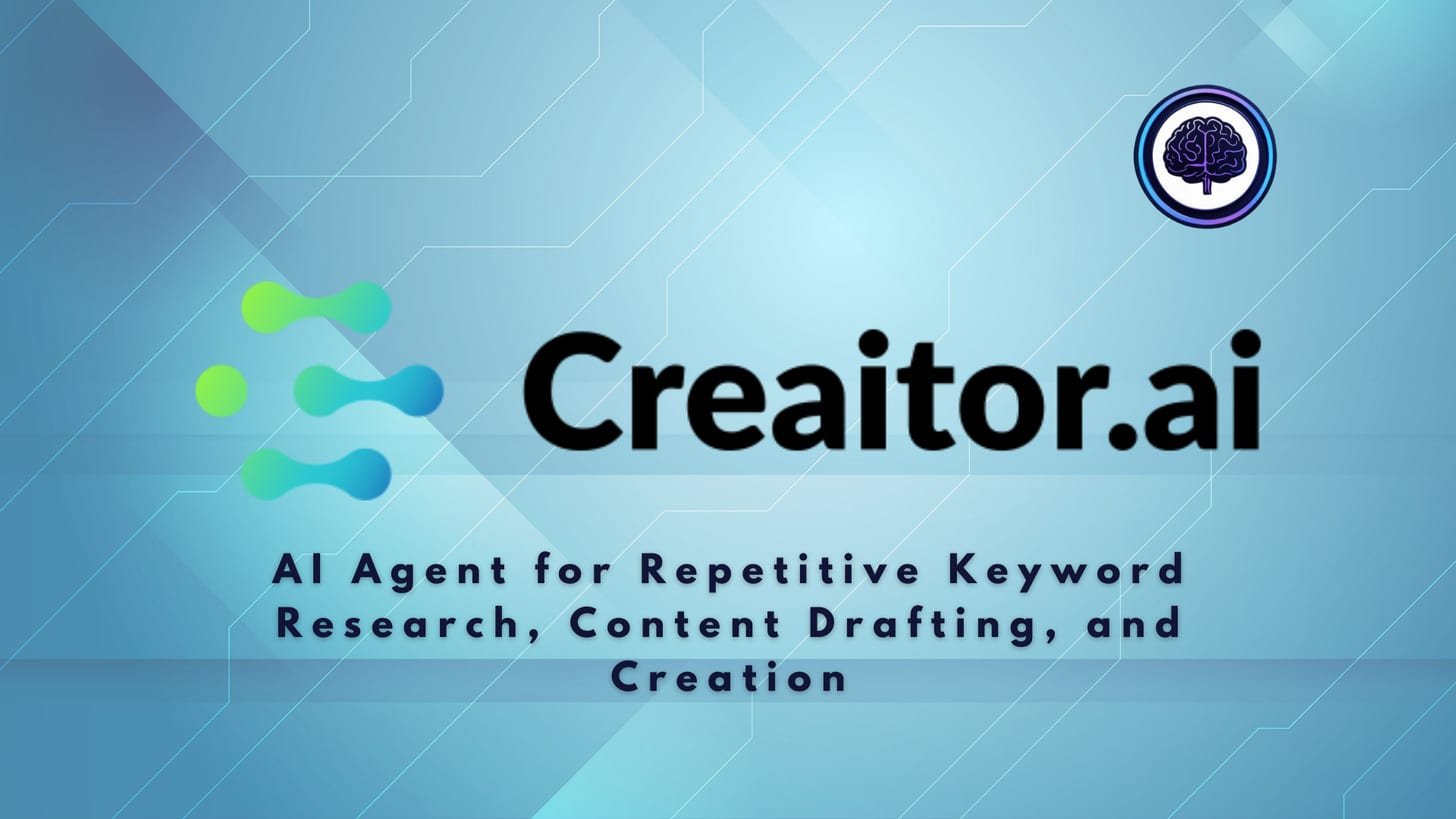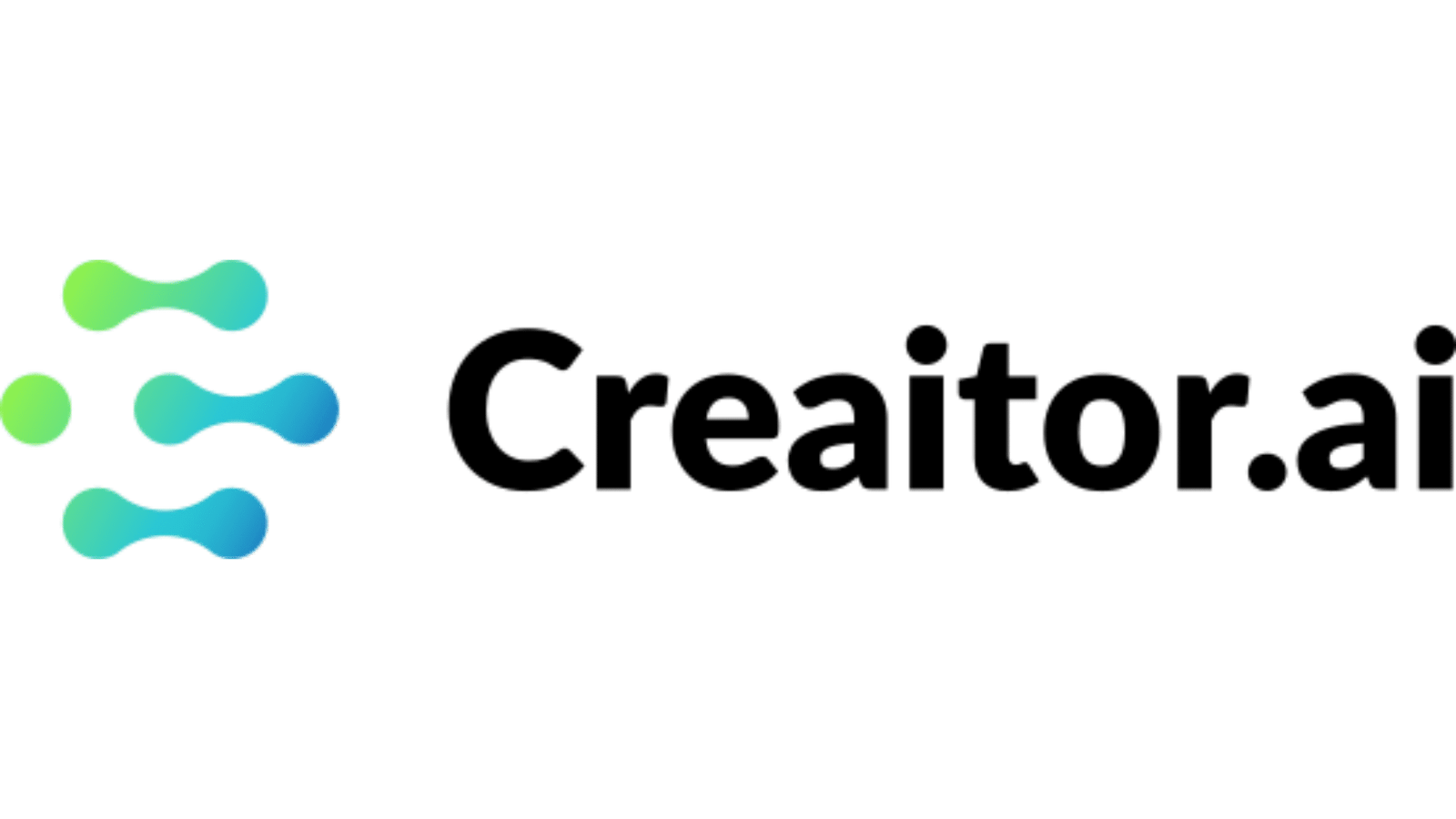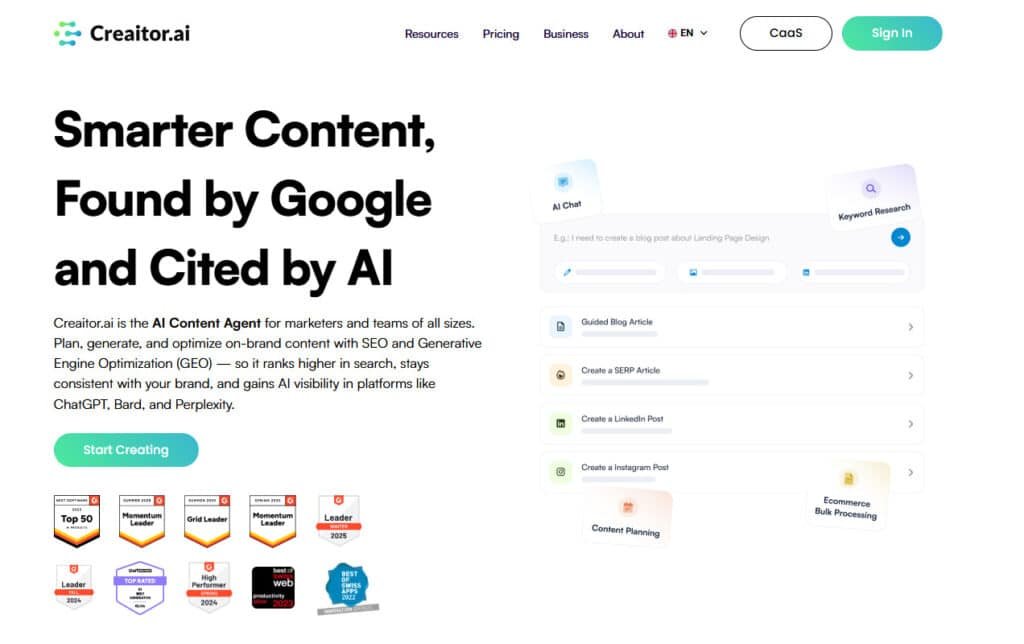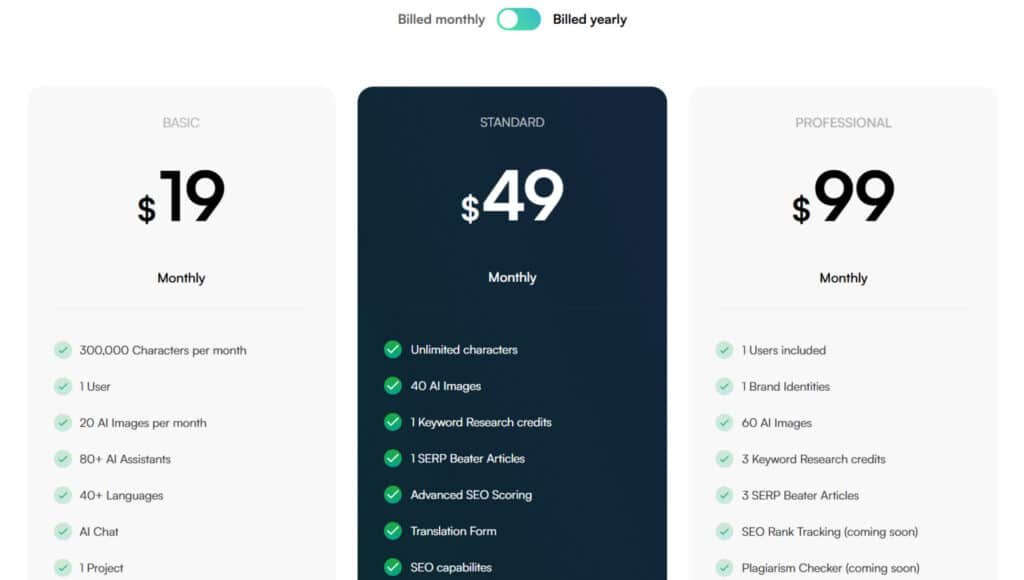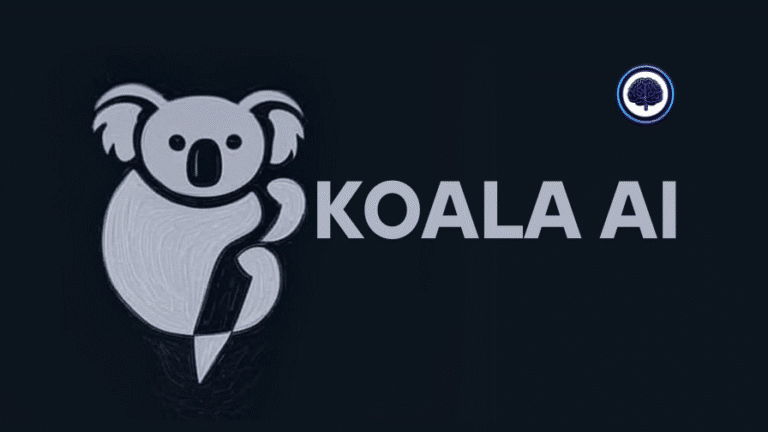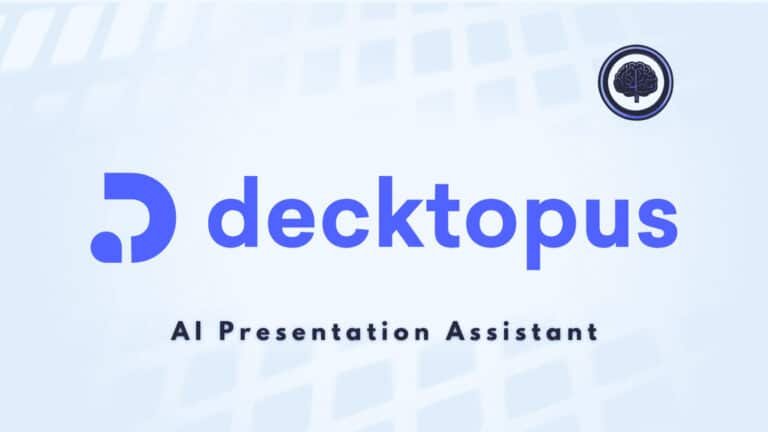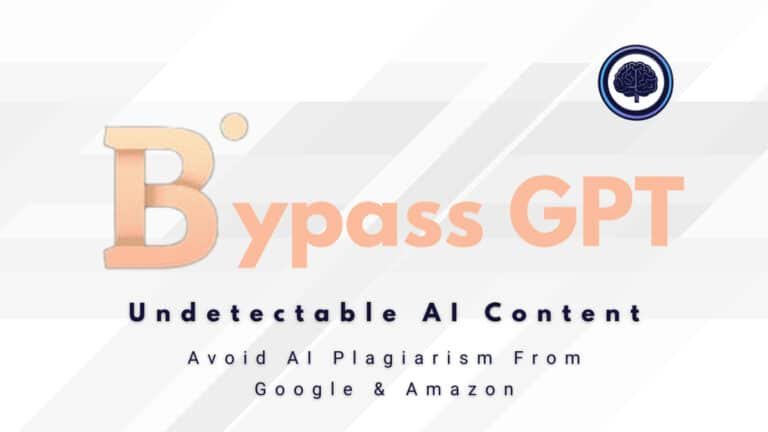You need reliable content fast — but many platforms promise speed and then leave you fixing tone, structure, and SEO yourself.
I get it. You juggle deadlines, multilingual briefs, keyword targets, and a tight budget. That makes inconsistent outputs and buggy features more than annoying — they cost time and clients.
Enter the solution: a Swiss-based platform that bundles 70+ assistants, a Blog Wizard, multilingual export, SEO scoring, and an image generator — all in a simple dashboard. I’ll show what it does best, where it stumbles (beta quirks and editing needs), and how its pricing maps to real teams.
In this creaitor review I share hands-on findings: when the tool sped up creation, when I still had to edit, and whether it fits solo bloggers or small teams. Expect clear comparisons, pricing clarity, and a honest take on features and trust (GDPR-friendly background included).
Ready to decide? Let’s dive in and see how to get creaitor working in your stack — and whether it earns a spot in your content workflow.
Key Takeaways: Creaitor AI Review
- Swiss-based platform with strong multilingual and SEO-focused features.
- 70+ assistants and Blog Wizard speed up content creation — but outputs often need editing.
- Pricing varies across sources; I translate tiers into real user scenarios.
- SERP-focused tools are promising but still in beta — verify results and facts.
- Good fit for deadline-driven creators who value GDPR-aligned data handling.
Creaitor AI Review: An Overview
Raamish’s Take
Creaitor AI serves as a smart AI content creation platform that automates the grunt work for marketers. It handles keyword research, drafting, and optimization, blending SEO with Generative Engine Optimization (GEO) to make your pieces shine in searches and AI overviews like ChatGPT.
I appreciate the Content Planner for streamlining workflows—plan, create, and publish across channels with real-time collaboration. The Brand Hub keeps everything on-voice, while automated competitor analysis spots gaps and clusters keywords for traffic wins.
Features like advanced SEO scoring and performance tracking let you tweak before launch, claiming 10x faster creation and 3x organic growth.
Compared to similar competitors, Creaitor packs more automation at a budget price. Ever waste hours on drafts that flop? This focuses on results, freeing you for strategy.
With G2 praise and awards like Best of Swiss Web Productivity, it’s a dependable boost for scaling content.
Introduction to Creaitor AI: Where It Fits in Today’s AI Landscape
Many platforms promise instant output; few give usable beginnings. This platform positions itself as a practical content and writing assistant for teams that need fast drafts with a clear structure. It offers 70+ task templates and a Blog Wizard to speed outline-led creation.
Headquartered in Switzerland, the company highlights GDPR-aligned data handling — a solid signal if your organization is strict about compliance and data flows. A free trial lowers the barrier to try the experience before committing.
Who uses it? Solo bloggers, small agencies, and startups that publish often find it useful. In my tests, it shines when you lock an outline first and then let the assistants draft sections you polish.
- Positioning: practical, speed-first platform for marketers and small teams.
- Competitors: heavier SEO/research tools like Jasper and LongShot—this tool trades advanced research for simplicity and faster outputs.
- Reality check: the intelligence helps, but editorial oversight remains necessary for accuracy and tone.
Overall, if your priority is high-velocity content creation with minimal setup, this platform is a credible addition to your stack — especially when you balance speed with careful editing.
What is Creaitor AI?
Imagine a dashboard where dozens of task-specific helpers turn a short brief into usable copy in minutes. This product is a focused writing assistant built as a library of templates and guided workflows. It aims to speed content creation while keeping structure predictable.
How it works under the hood
The system groups functionality into 70+ “assistants” — each one is a template tuned for a single job (blog intros, product copy, Google Ads). You give a brief (topic, keywords, tone), and the assistant returns structured text you can accept, edit, or regenerate.
The Blog Wizard helps you lock an outline first. Start with a title and key points, then generate section-by-section for cleaner drafts. Writer mode is freer — handy for quick expansions — but I find pairing it with an outline gives better results.
Who benefits most
Marketers, bloggers, and small teams who publish several pieces per month get the biggest lift. It’s a practical set of tools for deadline-driven work: fast drafts, multilingual support (46+ languages), and easy export to Docs or WordPress.
- Good for high-volume creation, not deep research.
- Helpful research helpers exist, but plan to fact-check.
- If you need predictable output on a schedule, this is worth a test drive.
Best Features of Creaitor AI
The feature set brings together task-specific templates, outline-led drafting, and lightweight SEO to speed content generation while keeping quality in check.
1. Content Planning and Creation
Creaitor.ai’s content planning and creation tools form the foundation for efficient content production, allowing users to develop structured strategies that align with marketing goals. These features integrate AI to handle initial ideation through final drafts, reducing manual effort and enabling focus on high-value tasks.
1.1 Content Planner
The Content Planner organizes campaigns by mapping deadlines and workflows, generating blogs and social posts via AI. This helps readers seeking scalable planning by automating timelines, ensuring timely launches that boost organic traffic without overlooked deadlines.
1.2 Article Wizard
Article Wizard pulls in recent news and site data for informed drafts, streamlining research-heavy writing. For those optimizing for timeliness, it ensures content remains relevant, supporting faster publication cycles that enhance audience retention.
1.3 Blog Wizard and Writer Modes
Blog Wizard locks outlines for section-by-section generation, while Writer mode enables free-form expansions. As a versatile writing assistant, it cuts editing needs, aiding users in producing polished blogs that rank better in search results.
1.4 70+ AI Assistants
Over 70 AI assistants target tasks like blog sections or ads, eliminating starting hurdles. These writing tools accelerate iteration, helping marketers create diverse formats that drive engagement and conversions efficiently.
1.5 Custom Templates and Automated Workflows
Custom templates cover ads and posts, paired with automated sequences for repetition. This setup benefits teams by standardizing outputs, allowing consistent content that scales without quality dips.
1.6 Unlimited Documents and Output History
Unlimited storage preserves all drafts and histories, facilitating revisions. Readers building archives find this invaluable for tracking evolutions, ensuring long-term strategy alignment.
1.7 Unlimited Document Cloud
Cloud access enables seamless collaboration across devices. It supports distributed teams by preventing version conflicts, maintaining project momentum.
1.8 Bulk Processor
Bulk processing handles large volumes under character limits, ideal for mass descriptions. This feature aids e-commerce users in generating variants quickly, optimizing inventory listings for sales.
1.9 AI Writing Capabilities
AI writing spans 40+ languages with model updates, strongest in English for SEO. As a core writing assistant, it localizes content, helping global audiences access tailored materials that improve reach.
2. SEO and Optimization Tools
These tools blend SEO with GEO for dual visibility in search and AI responses, providing data-driven refinements that elevate content performance.
2.1 SEO and GEO Integration
Integration identifies gaps for higher rankings and AI surfacing. Users researching visibility gain an edge by creating discoverable pieces that appear in ChatGPT outputs, expanding exposure.
2.2 Data-Backed SEO Scoring
Pre-publish scoring with on-page prompts aligns to intent. This assists drafters in preempting issues, yielding scores that predict stronger placements.
2.3 Topic Cluster Builder
Instant clusters build interconnected topics for traffic. Content strategists use this to form authority hubs, linking pages that amplify domain signals.
2.4 High-Potential Keyword Discovery
Keyword tools spotlight ranking opportunities with credits. Marketers planning calendars benefit by prioritizing terms that convert, refining focus for ROI.
2.5 SERP Beater (Beta)
Beta analysis uncovers competitor gaps, though results need validation. It empowers outranking by highlighting angles, ideal for competitive niches.
2.6 SERP Insights
SERP breakdowns inform outperforming strategies. Analysts leverage this for gap-filling content, directly lifting positions over rivals.
2.7 Advanced SEO Scoring
In-depth evaluations enhance readiness in pro tiers. This supports iterative tweaks, ensuring launches with maximal competitive potential.
2.8 SEO Rank Tracking
Tracking monitors progress over time. Users measuring campaigns track fluctuations, adjusting tactics for sustained gains.
2.9 Translation Form
Multilingual adaptation broadens reach. Global operators optimize non-English versions, maintaining SEO integrity across locales.
3. Brand Management and Consistency
Brand tools enforce uniformity, safeguarding identity in every output.
3.1 Brand Hub
Hub centralizes voice guidelines for multi-brands. Teams managing portfolios stay aligned, resonating deeper with segmented audiences.
3.2 Brand Voice Learning
Learning integrates style via checks, with full forthcoming. This aids consistency enforcers by embedding tones, reducing post-review fixes.
3.3 Brand Identities
Profiles manage dedicated setups per tier. Creators handling variants apply precise personas, enhancing authenticity.
4. Analytics and Performance Insights
Analytics turn data into actionable paths, quantifying content impact.
4.1 Performance Analysis
Data roadmaps refine reach and outcomes. Strategists audit hits, iterating for amplified business results like traffic surges.
4.2 Recommendation Engine
Suggestions optimize strategies in pro access. Planners receive tailored advice, accelerating improvements.
4.3 Content Calendar
Visualization tracks timelines. Coordinators visualize flows, preventing overlaps for smoother executions.
5. AI Agents and Collaboration
Agents automate workflows, fostering team synergy.
5.1 AI Agents
Agents manage research to optimization, spotting edges. Busy pros delegate routines, prioritizing innovation.
5.2 Creaitor Chat and AI Chat
Chats assist ideation in real-time. Queriers get instant edits, speeding refinements.
5.3 Team Collaboration Features
Multi-user sharing exports to Docs or WordPress. Collaborators hand off seamlessly, upholding standards.
5.4 Projects Management
Scalable project handling suits tiers. Overseers organize scopes, scaling efforts.
6. Media and Additional Utilities
Utilities enhance visuals and integrity.
6.1 Creaitor Art
Mood-based image generation fits headers. Visual seekers create assets, complementing text without external apps.
6.2 Plagiarism Check
Checks enforce originality and alignment. Publishers verify uniqueness, mitigating risks.
6.3 API Access
Programmatic ties scale custom needs. Developers integrate flows, automating pipelines.
7. Interface and User Experience
Interface prioritizes usability for quick ramps.
7.1 Intuitive Dashboard
Clean nav and flows yield drafts fast. Newcomers onboard swiftly, minimizing learning curves.
7.2 Multi-Platform Accessibility
Web-mobile access ensures flexibility. Remote users maintain productivity anywhere.
8. Additional Platform Capabilities
Core enablers round out the ecosystem.
8.1 Centralized Workflow
Single-interface consolidation cuts fragmentation. Integrators unify processes, boosting efficiency.
8.2 Auto-Publishing and Scheduling
Post-optimization automation distributes content. Publishers hit channels precisely, maximizing timeliness.
8.3 Priority Support
Dedicated aid in pro tiers resolves issues. Enterprises get swift guidance, sustaining operations.
8.4 Content as a Service (CaaS)
Bespoke outsourcing via consults. Overloaded teams offload, focusing on core strengths.
| Feature | What it helps with | Practical note |
| 70+ Assistants | Faster content creation (blogs, ads, social) | Great for volume; edit for tone |
| Blog Wizard / Writer | Structured outlines and quick expansion | Outline-first reduces rewrite time |
| SERP Beater (beta) | Keyword gap suggestions | Experimental—verify suggestions |
| SEO toolkit | On-page guidance and scoring | Good for draft alignment, not audits |
| Image generator | Custom visuals for posts | Fast and useful for headers |
Pricing Plans of Creaitor AI
Pricing can feel messy across sources — here’s a practical breakdown to help you decide quickly.
I tested public listings and compiled common tiers so you can compare features against quotas. Expect three core tiers: Basic, Standard plan, and professional plan. Always confirm current rates in-app before you commit.
Plan overview
Basic Plan
The entry-level Basic plan suits solo creators with core AI tools. Monthly: $19 for 300,000 characters/month, 1 user, 20 AI images/month, 80+ AI assistants, 40+ languages, AI Chat, 1 project, and unlimited documents. Annual: $199 yearly (unlimited projects/documents added).
Standard Plan
Standard targets growing teams needing SEO basics. Monthly: $49 for unlimited characters, 40 AI images, 1 keyword research credit, 1 SERP Beater article, advanced SEO scoring, translation form, and full SEO capabilities. Annual: $499 yearly (same features).
Professional Plan
Professional delivers enterprise-grade tools for optimization. Monthly: $99 for 1 included user, 1 brand identity, 60 AI images, 3 keyword research credits, 3 SERP Beater articles, SEO rank tracking (coming soon), plagiarism checker (coming soon), API access, bulk processing, and priority support. Annual: $999 yearly (same features).
| Feature | Basic ($19/mo, $199/yr) | Standard ($49/mo, $499/yr) | Professional ($99/mo, $999/yr) |
| Characters/Mo | 300,000 | Unlimited | Unlimited |
| Users | 1 | 1 | 1 (included) |
| AI Images/Mo | 20 | 40 | 60 |
| AI Assistants | 80+ | 80+ | 80+ |
| Languages | 40+ | 40+ | 40+ |
| Projects | 1 (Unlimited/yr) | 1 | 1 |
| SEO Tools | – | Yes | Yes |
| Keyword Credits | – | 1 | 3 |
| SERP Beater | – | 1 | 3 |
| Brand Identities | – | – | 1 |
| API & Bulk | – | – | Yes |
| Priority Support | – | – | Yes |
Which plan should you choose?
- Solo blogger: Basic tier to test cadence and costs.
- 1–2 person content team: Standard plan for SEO features and more characters.
- Agency or multi-site: Professional plan for unlimited quotas, images, and SERP Beater access.
Quick tip: map your monthly content and image needs before you get creaitor so quotas line up with real usage and avoid surprises.
Pros & Cons of Creaitor AI
For teams that churn content weekly, the real benefit is predictable throughput. Below I list practical pros and cons based on hands-on use and common user feedback. The goal: help you decide if this platform fits your publishing workflow.
Pros
- Fast and easy to navigate—marketing-focused tools reduce the blank-page problem and speed up first drafts.
- Competitive pricing and sensible quotas make regular content production affordable for bloggers and small teams.
- The guided Blog Wizard cuts structural errors, producing more consistent first drafts for SEO pages.
- Good multilingual output and lightweight optimization nudges broaden reach without a steep learning curve.
Cons
- Tone can wobble in longer pieces—you’ll often edit for brand voice and facts.
- Skip the outline and you’ll face more rewriting; clear briefs improve the quality of writing.
- The SERP beater is experimental—use it for ideas, not as the sole SEO authority.
- Complex technical or competitive research may still need a deeper toolset.
Support comes via a help center (13 articles) and an active Facebook community. They answer common questions quickly, but advanced SEO issues can exceed their scope.
Bottom line: Great for speeding up content production and reducing draft time. Less great if you need perfect voice matching without an editor. If those cons matter, consider the alternatives in the next section for deeper research and specialized workflows.
Creaitor AI Review: Key Takeaways
In current AI landscape, the practical win is speed with structure — not magic. If you lean on the Blog Wizard and lock an outline, you’ll cut rewrite time and get consistent first drafts.
- Sweet spot: structured drafting via the Blog Wizard — stronger outlines mean less writing time later.
- Everyday utility: solid features for routine seo needs (scoring and keyword credits), but not enterprise-grade research.
- Choose by goal: if your plan depends on deep SEO automation, look elsewhere; if you want speed and simplicity, this fits.
- Quotas matter: characters per month and images per plan vary — verify current allowances before you budget.
- SERP Beater: still beta—use it for ideas, not as your sole competitive tool.
- Adoption: the simple interface reduces onboarding time for new contributors.
- Team ROI: small teams gain hours saved per article by polishing faster drafts, not one-click publishing.
- Pricing: competitive — consider annual billing if you commit, but start with a trial to confirm fit.
If you have lingering questions, map your current workflow and test that exact process inside the trial window. My short creaitor review takeaway: it accelerates content-led growth when you stay hands-on with editing and verification.
Alternatives to Creaitor AI
Looking beyond one platform helps you match tools to real needs — not buzz.
Creaitor AI combines GEO-optimized writing, keyword clustering, and multilingual bulk generation—great for global teams at $19/month. If you need deeper rank tracking, on-page automation, or indexing speed, these six SEO-focused competitors provide specialized strengths.
Rankability
Rankability delivers NLP-powered content briefs, AI optimization scores, and agency workflows. Ideal for scaling high-volume sites—$149/month entry.
SERanking
SERanking offers comprehensive rank tracking, site audits, competitor analysis, and backlink monitoring. Agencies rely on its accuracy—starts at $52/month.
Indexly
Indexly accelerates Google and LLM indexing with API pushes and crawl monitoring. Publishers fix post-publish delays fast—$14/month starter.
Clickranks AI
Clickranks AI automates titles, metas, schema, and GSC fixes in one click. E-com stores see quick traffic gains—$38/month plan.
SnowSEO
ixSnowSEO** emphasizes rapid indexing, backlink alerts, and clean dashboards. Bloggers get simple, effective tools—$29/month access.
RankIQ
RankIQ provides low-competition keyword libraries, optimized briefs, and content graders. Niche sites rank #1 faster—$49/month entry.
Each tool complements Creaitor’s writing focus with stronger technical or research capabilities.
| Tool | Key Strengths | Starting Price | Best For |
|---|---|---|---|
| Creaitor AI | GEO writing, clustering, multilingual bulk | $19/month | Global content & AI search |
| Rankability | NLP briefs, optimization scores, agency tools | $149/month | High-volume agencies |
| SERanking | Rank tracking, audits, backlinks, competitors | $52/month | Full-suite SEO management |
| Indexly | Fast indexing, API pushes, LLM signals | $14/month | Post-publish speed |
| Clickranks AI | Auto on-page, schema, GSC integration | $38/month | E-com & quick optimizations |
| SnowSEO | Indexing + backlinks, simple dashboard | $29/month | Bloggers & daily monitoring |
| RankIQ | Low-comp libraries, optimized briefs | $49/month | Niche sites & fast ranking |
Quick guidance: if deep SEO and research matter, opt for LongShot or Jasper. If speed, simplicity, and lower cost win, the nimble platform I tested remains an attractive option — pair it with ProWritingAid or an SEO tool to cover gaps.
Who Created Creaitor AI & Trust Signals
I looked into the company background and found practical trust markers you can use in vendor checks. The product runs from Switzerland and follows EU GDPR procedures, which helps if you work with EU users or need clear governance for seo projects.
Data practices and documentation
Privacy policies and data-handling documents are public and straightforward. That makes it easier for IT and legal teams to complete a vendor form during procurement.
Support, docs, and community
The help center has about 13 concise articles that cover getting started and core features. Email support is available and responded reasonably fast in my experience—especially for setup and billing questions.
There’s also an active Facebook community where users swap tips in near real time. Onboarding content explains how to use each assistant and the Blog Wizard, so new writers ramp fast and produce consistent content.
Bottom line: Transparent policies, decent documentation, and community backing give enough confidence to pilot the platform on live projects—just verify any beta features before full rollout.
Use Cases & Workflows of Creaitor AI
A tight brief plus the Blog Wizard cuts the guessing and gets you to a draft faster. Start with the target keyword, audience, and angle. That short step shapes every following action.
SEO content creation: briefs, outlines, and serp beater articles
Workflow: write a brief, run the Blog Wizard to build an outline, then draft sections one at a time. Add SERP Beater suggestions when they seem relevant, but always validate with your favorite SEO tool.
Blog posts and thought leadership
Outline-first reduces edits. I generate intros and H2s, then layer in a quote and quick facts. This saves editing time and keeps structure consistent for long-form writing.
Google Ads and social media posts
Use assistants to craft headlines and descriptions. Iterate for brand tone and run quick A/B tests. For social media posts, spin blog takeaways into platform-sized media posts—LinkedIn, X, or carousel captions.
Multilingual marketing
Draft in English for the strongest seo capabilities, then localize into target languages (46+ supported). Always have a native reviewer polish nuance.
“The biggest win is getting from zero to a structured draft—editing becomes the high-value part of your workflow.”
| Use case | Core steps | Practical tip |
|---|---|---|
| SEO articles | Brief → Outline → Section drafts | Validate SERP Beater with an SEO tool |
| Blog & thought pieces | Outline-first → Add quotes → Polish | Generate H2s to speed edits |
| Ads & social | Headlines → Variants → A/B test | Tune tone per platform |
| Multilingual | English draft → Translate → Native review | Use image tool for localized visuals |
Setup & Onboarding for Creaitor AI
Getting started is faster than you think—most teams can set up a working project in under 20 minutes. The guided flow walks you through the basics so you can focus on goals and voice, not menus.
Free trial walkthrough:
Free trial walkthrough: creating projects, brand voice, and goals
Begin with the free trial and create a project. Name the project, define your audience, and set clear goals—traffic, conversions, or awareness.
Next, add a short brand voice sample or paste a high-performing paragraph to teach tone and cadence. That small step improves the quality of generated content and makes edits smaller.
Dialing in prompts for higher-quality output
The interface puts the Blog Wizard and Writer up front so you can jump into drafts without hunting. Be explicit in prompts: include the target keyword, audience level, and structure (H2s/H3s).
- Use the translation form and tone settings for multi-locale work.
- Generate 2–3 variations, cherry-pick lines, and merge them into a tighter draft.
- Ask the assistant for an FAQ or key takeaways when you need quick sections.
Practical tips: save winning prompts in a shared doc, run a full brief-to-publish workflow before the trial ends, and lean on support or the help center if you get stuck.
“Setup takes minutes; consistency comes from saving prompts and defining goals up front.”
Case Study / Personal Experience with Creaitor AI
Short intro: I ran practical tests to see how an outline-first process compared to one-click generation for blog work. The goal was simple: measure time saved and check originality signals.
Real-world results: outline-driven blogging vs. one-click generation
One-click generation produced a coherent, generic draft that worked as a quick starting point. It read cleanly but lacked distinct voice and specific angles. I spent extra time editing sentences and adding unique examples.
Outline-led (Blog Wizard) gave me cleaner structure and focused sections. Headings guided the writer step, so each paragraph had clear intent. In practice, this cut my editing by about 30–40% and reduced rewrite cycles.
My experience: workflow, editing time saved, and Originality considerations
My workflow became: brief → outline → section drafts → voice pass → fact-check → on-page SEO tweaks → publish. Over four articles, the process saved roughly 1–1.5 hours per draft compared to writing from scratch.
On originality: scans sometimes flagged generated text. So I add proprietary data, quotes, and unique examples before publishing. The writer mode is handy for filling gaps and FAQs, but I avoid using it alone for long-form content without an outline.
- Key takeaway: the tool speeds up content generation in sprints—but you still need an editor to secure voice, facts, and originality.
- Practical tip: pair the Blog Wizard with keyword scoring for SEO pages, then manually verify headings and internal links.
“Speed-to-structure is the real value — the human edit remains the differentiator.”
Limitations & Who Should Skip
Not every team will benefit the same way—here’s who should pause before you sign up.
If you need bulletproof SERP-gap analysis today, skip this for now. The beater feature is still beta and can return unreliable suggestions. Treat its output as brainstorming, not a final source for strategy.
If your brand voice is subtle or legal precision matters, expect extra editorial time. Tone drifts in longer content, so you’ll need edits to preserve voice and claims.
- Research-heavy teams: If you require automated citations, deep audits, or enterprise-grade capabilities, pick a dedicated SEO tool instead like SERanking and Rankability.
- High-volume publishers: Entry plans cap characters per and features—map your characters per month before choosing a plan.
- Non-outline writers: Writers who skip outlines will likely spend more time revising; the system rewards structured use.
- International SEO: SEO guidance is strongest in English—localize and have native reviewers for other SERP contexts.
If you already run a mature content ops stack, weigh overlap carefully. This platform speeds draft creation, but it won’t replace your editor, fact-checker, or full SEO suite.
| Who should skip | Reason | Practical action |
|---|---|---|
| Research teams | Need citations and deep audits | Use Agility writer or AI-Writer for research-first workflows |
| Compliance-heavy brands | Require precise terminology and liability checks | Keep human review in the workflow |
| High-volume publishers | Entry plans limit characters per month | Budget for a higher plan or monitor quotas |
| Non-English markets | SEO guidance favors English | Localize output and review with native speakers |
“Bottom line: it accelerates capable teams; it’s less ideal as a one-click solution for complex, high-stakes content.”
Conclusion
Raamish’s Take
Creaitor AI serves as a smart AI content creation platform that automates the grunt work for marketers. It handles keyword research, drafting, and optimization, blending SEO with Generative Engine Optimization (GEO) to make your pieces shine in searches and AI overviews like ChatGPT.
I appreciate the Content Planner for streamlining workflows—plan, create, and publish across channels with real-time collaboration. The Brand Hub keeps everything on-voice, while automated competitor analysis spots gaps and clusters keywords for traffic wins.
Features like advanced SEO scoring and performance tracking let you tweak before launch, claiming 10x faster creation and 3x organic growth.
Compared to similar competitors, Creaitor packs more automation at a budget price. Ever waste hours on drafts that flop? This focuses on results, freeing you for strategy.
With G2 praise and awards like Best of Swiss Web Productivity, it’s a dependable boost for scaling content.
After testing real workflows, I can sum up when this tool actually speeds your pipeline and when it needs a human touch.
I recommend it if your team values fast draft creation and follows an outline-first process. The main pros are speed, clear seo capabilities, and a friendly UI that reduces setup time.
If quotas and SERP features matter, consider the professional plan — it usually adds more keyword credits and higher images per month. Otherwise, start mid-tier and scale.
Try the free trial, run a real brief-to-publish workflow (blog to social media posts), and check quotas against your monthly content needs. Keep a human editor for fact-checking and voice.
Ready to get creaitor? Spin up a trial, map your plan limits, and publish your first optimized piece this week — the support and community will help you ramp fast.
Frequently Asked Questions
What is Creaitor AI and what does it do?
Creaitor AI is a content-creation platform that combines guided writing assistants, templates, and SEO tools to help you draft blog posts, social media copy, ads, and localized content faster. I find it particularly useful for outline-led blogging and quick social media iterations—think drafts, SEO scoring, and images in one place.
Who benefits most from using this platform?
Marketers, bloggers, small teams, and solo creators benefit most—especially anyone juggling deadlines and volume. It’s built for people who need structure (outlines, briefs) plus speed, and who want SEO guidance without a full agency workflow.
What are the standout features I should know about?
The platform offers 70+ AI assistants (templates), Blog Wizard/Writer modes for outline-driven drafting, a SERP Beater beta for keyword gap analysis, SEO scoring and on-page guidance, multilingual support (40+ languages), an AI image generator, and Docs/WordPress-friendly collaboration tools.
How does the SERP Beater feature work and is it reliable?
SERP Beater (beta) analyzes competitor content and highlights keyword gaps and on-page opportunities to help you outrank them. It’s promising for research and ideation, but since it’s in beta, expect occasional inaccuracies—use it as a strategic aid, not a final SEO audit.
What SEO capabilities are included?
You get keyword research credits, on-page SEO guidance, and a content scoring system that flags keyword use, readability, and structure issues. I recommend pairing its suggestions with a separate rank-tracking tool for full performance monitoring.
How does the image generator perform?
The image generator creates customizable images by prompt, mood, and style. It’s handy for headlines, social posts, and quick visuals—quality varies by prompt and sometimes needs refinement, but it speeds up creating bespoke media.
What plans are available and what do they include?
Plans typically include Basic, Standard, and Professional tiers with different characters-per-month and images-per-month limits. The Standard plan unlocks more SEO features; Professional adds higher character limits, advanced SERP Beater access, and priority support. Annual billing usually gives a discount.
Is there a free trial and what are the limitations?
Yes—there’s a free trial that lets you test writing assistants, generate sample content, and try the image generator. Trials usually limit characters and image credits, so you can’t fully stress-test high-volume workflows but you can evaluate core features.
Which plan should a small team choose?
For small teams that publish regularly and want SEO features, the Standard plan is a practical starting point. If you need heavier monthly character limits, advanced SERP Beater features, or multi-seat collaboration with brand controls, upgrade to Professional.
How good is the onboarding and interface?
The dashboard is intuitive with quick-start flows and guided templates. I found onboarding smooth—creating a project, setting brand voice, and running an outline takes minutes. You’ll still need to fine-tune prompts for best results.
What are the main pros and cons?
Pros: ease of use, speed, solid marketing-focused tools, and competitive pricing. Cons: tone consistency can require edits, generated content needs human review, and the SERP Beater is still maturing.
How reliable is support and documentation?
Support includes email help and community resources (help docs and a Facebook group). Response times vary by plan—Professional customers usually get faster, prioritized support.
Is the platform suitable for multilingual projects?
Yes—multilingual support covers 40+ languages with English-led optimization. It’s effective for translating and localizing marketing copy, though final localization review by native speakers remains important.
How does it compare to alternatives like SERanking & Agility Writer?
SERanking is strong for long-form and polished SEO workflows; Agility Writer excels at deep research and integrations. This platform is competitive on templates, multilingual support, and price—pick based on your need for research depth vs. workflow speed.
What are common use cases and workflows?
Typical use cases: SEO content creation (briefs, outlines), blog posts with outline-first drafts, Google Ads and social media rapid iterations, and multilingual marketing/localization. It fits teams that want structure plus fast content cycles.
Are there privacy or data protections to be aware of?
The company is Swiss-based and promotes GDPR-aligned data practices. That offers stronger privacy assurances compared with some US-based alternatives—still read the privacy policy if you handle sensitive data.
Should anyone avoid using this platform?
Skip it if you need perfectly polished, publication-ready prose straight from the tool or if you run heavily regulated content (legal/medical) without expert review. It’s best as a productivity and ideation layer, not a substitute for specialist human editors.

